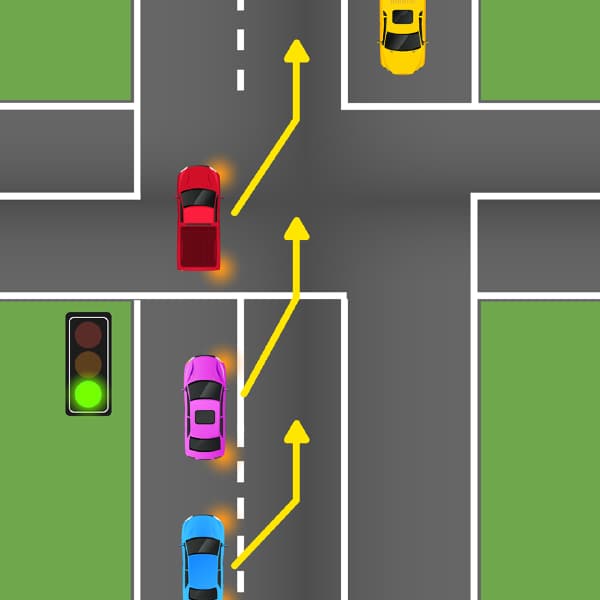Motor Vehicle Lane Changing Accidents. It’s not as simple as it seems
Cut-in maneuvers, Side swipes, Side-sweeps, Swoop & squats. All lane changing maneuvers by different names. Lane change maneuvers are common on the road, but studies have shown that lane changing tends to cause negative shockwaves (i.e., one car brakes so others must subsequently brake) Cut-ins, in which lane-changing vehicles move into the space ahead of a relatively closely following vehicle in the adjacent lane, are potentially dangerous and may lead to traffic collisions. Improper lane changes, including overtaking and unsafe cut-ins, account for approximately 5% of all crashes and 7% of all crash fatalities.
CAUSES: The immediate cause of the side-sweep accident is the incorrect decision made by the driver of the lane changing vehicle. Simple driver / human error.
Side-sweep accidents occur during driving on multi-lane highways when a vehicle initiates a lane change and when a follower vehicle is blocking the other lane. Side-sweep accidents lead to a side collision, but the resulting loss of control can create further collisions.
The major contributing cause is lack of situational awareness. The driver of the lane changing vehicle is not aware that there is a blocking vehicle in the other lane. This lack of awareness might be due to either the driver neglecting to check the appropriate side mirror, or because the blocking vehicle was in the driver’s blind spot.
The lane changing vehicle might have communicated its intention to change lanes with proper signal use, but this signal had not been seen by the blocking vehicle. Another cause may be incorrect visual / mental perception. The lane changing driver might judge that the blocking vehicle’s driver will slow down to give way, but instead, that driver chooses to accelerate, relying on the lane changing driver seeing him and abandoning the action.
Even for drivers who do check their mirrors, a significant number do not make a strong effort to turn their head and make a quick visual inspection. As many vehicles have significant blind spots, it is possible that the blocking vehicle exists even if it does not show up in the mirror. Conditions might change between the last time a driver looked at the target lane versus when the lane change is initiated. For instance, an accelerating vehicle might enter the blocking zone without the driver being aware of it. The ability to accurately assess whether the lane will be free at the initiation of the lane change requires that the driver makes a prediction of the way that the traffic will evolve. This requires constant situational awareness when driving. We have all encountered the speeding motorcycle or the reckless speeding driver weaving in and out of traffic that appears to come out of nowhere.
If a passenger car driver has 0.5 seconds of additional warning time, about 60% of rear-end collisions can be prevented; and an extra full second of warning time can prevent about 90% (per NTSB data). The use of turn signals provides this warning, making it not only a responsible safety precaution for drivers themselves, but also a sign of respect for others’ safety, especially occupants of following vehicles.
TAKE-A-WAYS:
- Use your turn signals. (always conduct pre trip inspection to make certain all lights & signals work)
- Check your mirrors. (always properly adjust all mirrors prior to each trip)
- Check your blind spots by looking over your shoulder. (be familiar with each vehicle you operate)
- If it’s safe and you have compensated for the distance & speed of other cars, then change lanes.
- Never assume other vehicles see you and will yield right of way.
- Turn off your signal after completing the lane change.
- Don’t rush. Plan trip times to compensate for traffic and weather conditions. (rushing promotes aggressive and careless driving)
- Avoid all things that distract from the pure focus of driving. (distracted driving)
- Be courteous and polite to surrounding drivers and pedestrians.
- Never drive under the influence of anything that may impair your judgement, speed and depth perception. (prescription and over the counter medications, including alcohol and illegal substances)
- Do not drive when you are fatigued and tired.
- Practice constant situational awareness when operating any motor vehicle.
By Steve Gailbreath
